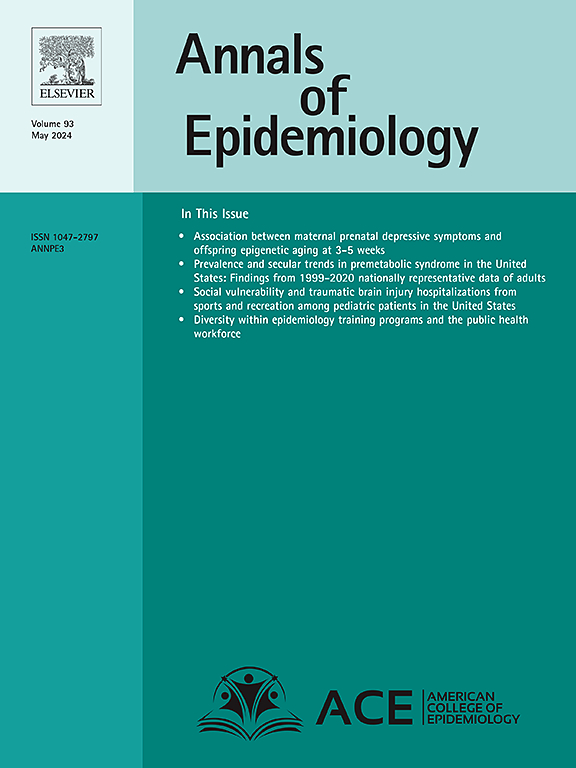Examining potential bystander presence for overdose deaths in Tennessee, 2019–2022
IF 3
3区 医学
Q1 PUBLIC, ENVIRONMENTAL & OCCUPATIONAL HEALTH
引用次数: 0
Abstract
Objective
To examine potential bystander presence in fatal drug overdoses in Tennessee by assessing the type of potential bystander, type of responses carried out, reasons for lack of response, and the sociodemographic characteristics of overdose decedents in Tennessee.
Methods
We conducted a cross-sectional study to examine potential bystander presence in overdose deaths in Tennessee using 2019–2022 data from the State Unintentional Drug Overdose Reporting System. Descriptive statistics were calculated to compare potential bystander presence by demographic breakdown of decedents, type of potential bystander, and reasons for no response.
Results
We identified 11,970 accidental and undetermined fatal drug overdoses in Tennessee from 2019 to 2022. A potential bystander was present in 24.8 % of deaths. Most potential bystanders were family members (27.4 %), intimate partners (26.5 %), or friends (21.1 %). Overall, potential bystanders called 911 or attempted another type of response in 94.5 % of overdose events. The most frequent reason for no response was being spatially separated from the decedent (34.2 %).
Conclusions
A quarter of drug overdose deaths in Tennessee had a potential bystander present who could have intervened. Continued education about how to identify and respond to an overdose as well as the availability of naloxone should be delivered to potential bystanders. Future qualitative studies should assess bystander knowledge and barriers to responding. Messaging should also encourage people who use substances to avoid using alone, given that most overdose deaths occurred without a bystander present
2019-2022年在田纳西州检查潜在的旁观者过量死亡。
目的:通过评估田纳西州潜在旁观者的类型、采取的反应类型、缺乏反应的原因以及过量用药受害者的社会人口学特征,研究田纳西州致命药物过量中潜在旁观者的存在。方法:我们进行了一项横断面研究,利用州非故意药物过量报告系统2019-2022年的数据,检查田纳西州过量死亡中潜在的旁观者存在。计算描述性统计数据,通过死者的人口统计分类、潜在旁观者的类型和无反应的原因来比较潜在旁观者的存在。结果:2019-2022年,我们在田纳西州发现了11,970例意外和未确定的致命药物过量。24.8%的死亡中存在潜在的旁观者。大多数潜在的旁观者是家庭成员(27.4%)、亲密伴侣(26.5%)或朋友(21.1%)。总的来说,在94.5%的过量事件中,潜在的旁观者拨打了911或尝试了其他类型的反应。没有回应的最常见原因是与死者在空间上分离(34.2%)。结论:在田纳西州,四分之一的药物过量死亡有一个潜在的旁观者在场,他本可以干预。应该向潜在的旁观者提供关于如何识别和应对过量以及纳洛酮可用性的持续教育。未来的定性研究应评估旁观者的知识和反应障碍。信息也应该鼓励使用药物的人避免单独使用,因为大多数过量死亡都是在没有旁观者在场的情况下发生的。
本文章由计算机程序翻译,如有差异,请以英文原文为准。
求助全文
约1分钟内获得全文
求助全文
来源期刊

Annals of Epidemiology
医学-公共卫生、环境卫生与职业卫生
CiteScore
7.40
自引率
1.80%
发文量
207
审稿时长
59 days
期刊介绍:
The journal emphasizes the application of epidemiologic methods to issues that affect the distribution and determinants of human illness in diverse contexts. Its primary focus is on chronic and acute conditions of diverse etiologies and of major importance to clinical medicine, public health, and health care delivery.
 求助内容:
求助内容: 应助结果提醒方式:
应助结果提醒方式:


